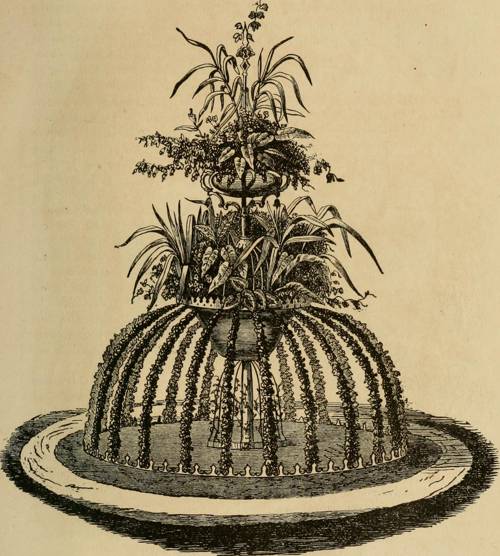
FAQ About Creating an Indoor Plant Sanctuary for Mental Wellness

What are the mental health benefits of having indoor plants?
Indoor plants have been shown to reduce stress, improve mood, and enhance overall mental well-being. They help purify the air, boost concentration and productivity, and create a calming environment. Studies have indicated that interaction with plants can lower blood pressure, reduce feelings of anxiety, and promote a positive disposition.

What types of plants are best for mental wellness indoors?
Certain plants are known for their stress-relieving properties and ability to improve air quality. Among these are: Lavender, known for its calming fragrance; Snake Plant, which improves indoor air quality; Aloe Vera, recognized for its air-purifying capabilities; and Spider Plant, which is easy to care for and helps reduce indoor pollution.

How should I arrange plants to maximize mental well-being?
To optimize mental wellness, place plants in areas where you spend most of your time, like your workspace or living room. Position them at various heights using shelves, plant stands, or hanging baskets to bring in a dynamic visual interest while enveloping the space in greenery. Ensure that the plants have adequate sunlight based on their specific needs.

Can plants really improve indoor air quality and thus enhance mental health?
Yes, indoor plants are effective in filtering out harmful pollutants and toxins from the air. They absorb carbon dioxide and release oxygen, leading to improved air quality. Better air quality can help improve focus, reduce symptoms of fatigue, and promote a healthier indoor environment, contributing to enhanced mental well-being.

Are there any low-maintenance plants suitable for a mental wellness sanctuary?
Yes, there are several low-maintenance plants that are ideal for creating a mental wellness sanctuary. These include Succulents, Zamioculcas Zamiifolia (ZZ Plant), Peace Lilies, and Pothos. These plants require minimal care, making them perfect for individuals new to plant care or with a busy lifestyle.

How do indoor plants affect mood and productivity?
Indoor plants can significantly boost mood and increase productivity. They provide a visually pleasing environment that can reduce stress and enhance psychological well-being. The presence of greenery in workspaces has been associated with higher productivity levels due to enhanced concentration and reduced mental fatigue.

What are some tips for beginners to start building their indoor plant sanctuary?
Beginners should start by selecting a few easy-to-care-for plants such as Spider Plant or Peace Lily. It's crucial to understand the light and water requirements of each plant. Begin with one or two plants and gradually increase the number as you become more comfortable with plant care. Regularly dust the leaves and ensure proper drainage to keep plants healthy.

Can the presence of plants in the bedroom aid in better sleep?
Yes, having plants in the bedroom can aid sleep by improving air quality and creating a calming atmosphere. Plants like Lavender, Jasmine, and Snake Plant are known for their ability to promote relaxation and reduce stress, which can contribute to a better night's sleep.

What are the essential tools needed for indoor plant care?
Basic tools for indoor plant care include a watering can with a narrow spout for precision, pruning shears for trimming leaves and stems, a moisture meter for checking soil dampness, and fertilizer specifically formulated for indoor plants. A plant mister can also be beneficial for plants that thrive in humid environments.

How does natural light influence the choice of plants for an indoor sanctuary?
Natural light significantly impacts which plants will thrive in your indoor sanctuary. South-facing windows receive the most intense light, suitable for sun-loving plants like Cacti and Succulents. North-facing windows provide low light, ideal for shade-tolerant plants such as Ferns and Peace Lilies. Understanding light conditions will help choose the right plants for your space.

Are there specific plant arrangements that promote serenity and relaxation?
Arrangements that include a variety of plant sizes and types can create a serene environment. Incorporate flowing plants like Ivy and Pothos to create soft edges. Utilize symmetrical arrangements or calming green hues to promote balance and relaxation, or group plants in odd numbers to create a natural, harmonious look.

What role does color play in selecting plants for a wellness sanctuary?
The color of plants can influence mood and well-being. Green is typically associated with tranquility and renewal. Adding plants with colorful blooms like Peace Lilies or Orchids can enhance feelings of happiness and stimulate a calming environment. Consider your personal color preferences and their psychological impacts when selecting plants.

How often should I water indoor plants to maintain a sanctuary for mental wellness?
Watering frequency varies depending on the plant species, pot size, and environmental conditions. Generally, most plants should be watered when the top inch of soil feels dry. Over-watering can lead to root rot, so it's crucial to understand each plant's specific watering needs and adjust based on seasonal changes.

Can indoor plants help reduce noise and create a peaceful environment?
Yes, indoor plants can help reduce ambient noise, creating a more peaceful setting. They absorb, deflect, and refract sound, particularly in environments with hard surfaces. Trees and large leafed plants are especially effective for noise reduction, helping to cultivate a serene atmosphere conducive to relaxation and mental well-being.

Is there a particular spot in the home that's best for a plant sanctuary focused on mental health?
The best spot for a plant sanctuary is one where you spend a lot of time and can frequently enjoy the benefits of the greenery. Consider areas like your reading nook, home office, or bedroom. Ensure the location has suitable lighting and space for the plants to thrive. It's also important to position them where they will be unobtrusive to daily activities.

How do I ensure my indoor plant sanctuary remains sustainable and eco-friendly?
To create a sustainable plant sanctuary, choose native or drought-tolerant plants that require less water and maintenance. Use organic potting soil and fertilizers, and recycle any plant waste as compost. Opt for natural pest control methods and repurpose containers or pots to minimize environmental impact.

What are common challenges in maintaining an indoor plant sanctuary and how can they be addressed?
Common challenges include pests, over-watering, and insufficient light. Address pest issues by regularly inspecting plants and using organic insecticidal soap. Prevent over-watering by ensuring good drainage and understanding the water needs of each plant. For insufficient light, consider supplementing with grow lights to ensure plants receive adequate illumination.

How does humidity affect indoor plants and their role in a mental wellness sanctuary?
Humidity plays a crucial role in plant health, with most indoor plants preferring a relative humidity level between 40-60%. High humidity can prevent plants from losing water quickly, supporting lush growth. Use a humidifier or group plants together to increase humidity, which can enhance the calming effects of your plant sanctuary.

Can I still create a plant sanctuary if I have pets that are prone to chewing plants?
Yes, you can create a pet-friendly plant sanctuary by selecting non-toxic plants such as Areca Palms, Bamboo, and Boston Ferns. Educate yourself on plants toxic to pets and place fragile or potentially harmful plants out of reach. Alternatively, use plant deterrents or train pets to avoid plants.

How can one incorporate other relaxing elements into a plant sanctuary to enhance mental wellness?
Incorporate soft lighting, soothing color palettes, and natural materials like wood or stone to complement your plant sanctuary. Adding elements such as water features, calming music, or aromatherapy diffusers can create a multi-sensory environment that enhances relaxation and mental well-being.
